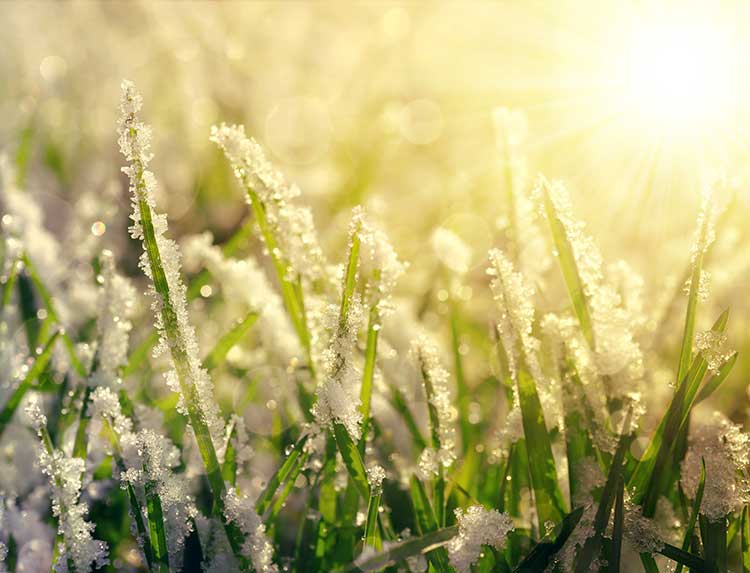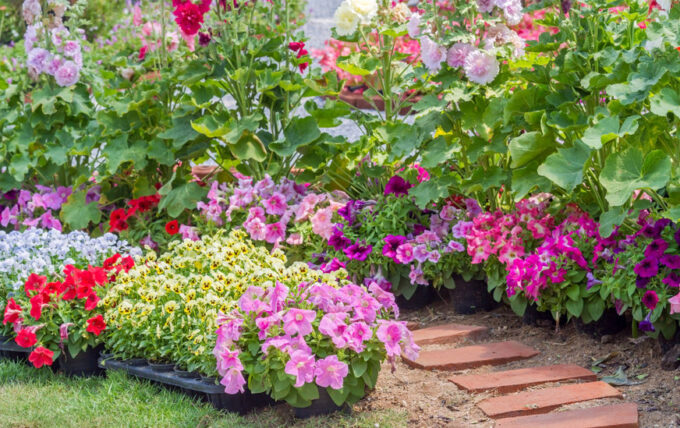How To Time Your Garden Tasks Around The Last Frost Date
As we begin a new spring, many of us start thinking about what we’re going to plant in our garden. The best time for planting things in the garden depends on what the weather is like in your area. If you want to give your garden vegetables and flowers the best chance of growing and thriving in 2022, then you’ll want to make sure you plant them at the right time this spring.
Timing for gardening is based on the last frost date for your location. The date when you can be reasonably sure that the weather won’t get so cold that your plants freeze gives you a guide for when you should plant different types of plants in your garden and when to start seeds indoors.

Find Your Frost Dates
You can find the frost date for your area by typing “last frost date” and your zip code into any internet search engine. You could also visit sites such as Dave's Garden and The Old Farmer’s Almanac where you can plug in your zip code and see the average frost dates at your location.
Sometimes, the dates given by different sites will vary by a few days. Take Richardson Saw & Lawnmower’s location in Richardson, Texas as an example. The Old Farmer’s Almanac lists our last spring frost date as March 12 and our first fall frost date as November 22. Dave’s Garden lists our average frost dates are as running from November 13 through March 20.
There’s also a certain risk of frost before or after these dates, too, since these websites only show average dates for first and last frosts. Dave’s Garden goes into more detail, saying that after March 20 there's about a 50% chance of getting a late spring frost. It also tells us there's only a 10% chance of frost after April 10, which lets us know when it’s safe to plant more cold-sensitive plants outdoors.
Work Garden Soil
You can start working your garden soil before the last frost date for your area. In fact, you'll have to get into your garden before the frost-free date if you want to plant cool-weather vegetables like broccoli and cabbage, which are tough enough to survive and thrive in colder weather.
Wait until the soil is somewhat dry and the ground is not frozen. The garden soil should be dry enough that if you pick up a handful of soil and squeeze it, it crumbles. You'll also need to make sure the ground is free of ice crystals, and that you’ve cleared the garden of dead plants and weeds.
As you’re tilling the soil, remember to work organic amendments like compost into the garden soil. That will make the soil healthier for your garden plants, improve soil texture, and help supply important nutrients.
Plant Cold-Weather Plants
Seed packages should give you guidelines for when to start seeds indoors or plant them outside in your garden. For example, you should start Calabrese broccoli seeds indoors 4 to 6 weeks before the last frost date and transplant them into the garden before the last frost. Using Richardson as an example again, that means we'd be starting the seeds between February 6 and 20 and planting them in the garden before March 20.
There's quite a variety of plants you can put out in the garden before the last frost. Cool-weather vegetables include broccoli, Brussels sprouts, cabbage, cauliflower, celery, peas, radish, and salad greens. All of these plants thrive in cool weather and getting them in the ground before the last frost date is important if you want to start harvesting them before the weather gets too warm.
Cool-weather flowers include calendula, dianthus, pansies, and viola. These pretty flowers can provide color in your garden even during the chilly, frosty months of the year. Many of them will even bloom through snow.
Plant Warm-Weather Plants
Once the last frost date has passed, you can turn your attention to planting vegetables and flowers that prefer warmer weather. Warm-weather plants can be killed or damaged by frosts, though some are more cold-tolerant than others.
You can plant squash seeds about a week before your last frost but you should wait until after the last frost to plant corn. A few plants, like basil, won’t be damaged until temperatures drop below 38 degrees Fahrenheit. More sensitive vegetables should be planted later in the spring after all danger of frost has passed. Tomatoes, for example, do best if you plant them after the nighttime temperatures are consistently 50 degrees Fahrenheit or higher. Other warm-weather vegetables include potatoes, peppers, squash, and beans.
Many flowering plants should also be planted after the last frost date for your location. Some flowers, including hollyhock, petunia, and verbena, can be planted on the last frost date. Others should be planted 1 to 2 weeks after the last frost date. These more sensitive plants include alyssum, impatiens, and zinnias.

Helping Plants Survive A Frost
Sometimes, even if you’ve planned your planting times carefully, you’ll still get a late spring frost. If you’re tracking the weather and hear that a frost is expected, there are steps you can take to help keep tender plants safe.
One option is to water the garden soil right before sunset. Try to avoid getting water on the leaves, but make sure you water the soil thoroughly. As the water evaporates overnight, it will raise the air temperature around your plants.
You can also cover plants to protect them from frost. Make sure you apply the cover before sunset to help trap heat from the daylight. Covers that work well include burlap, lightweight tarps, newspapers, straw, and bedsheets. For individual seedlings, you could also use lightweight baskets or cut-off plastic bottles as covers.
Good luck with your garden this year! If you need any tools for working your garden—tillers, shovels, trowels, pruners, etc.—come visit Richardson Saw & Lawnmower. We carry hand tools for gardening as well as the power equipment you'll need to work your garden soil.


